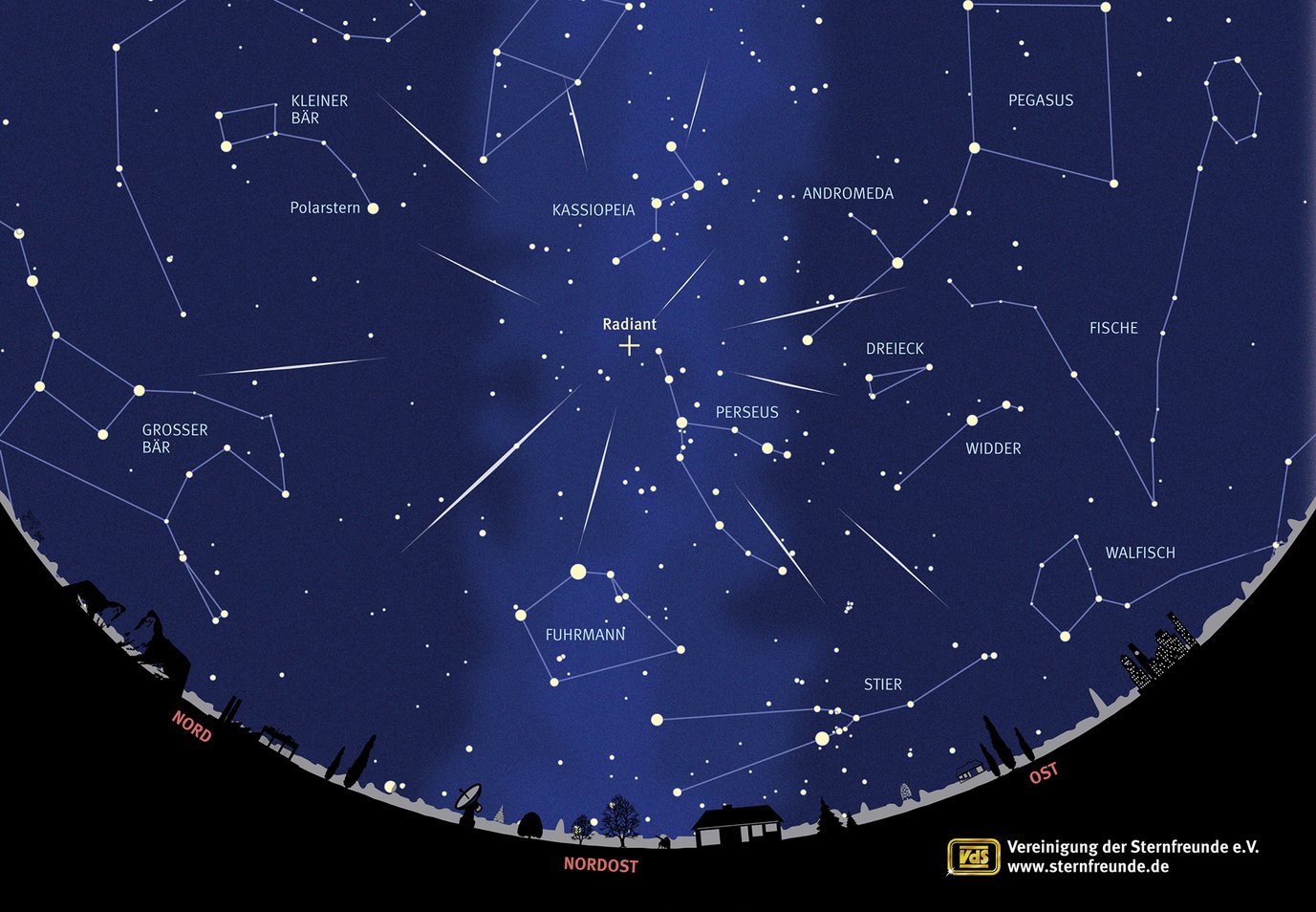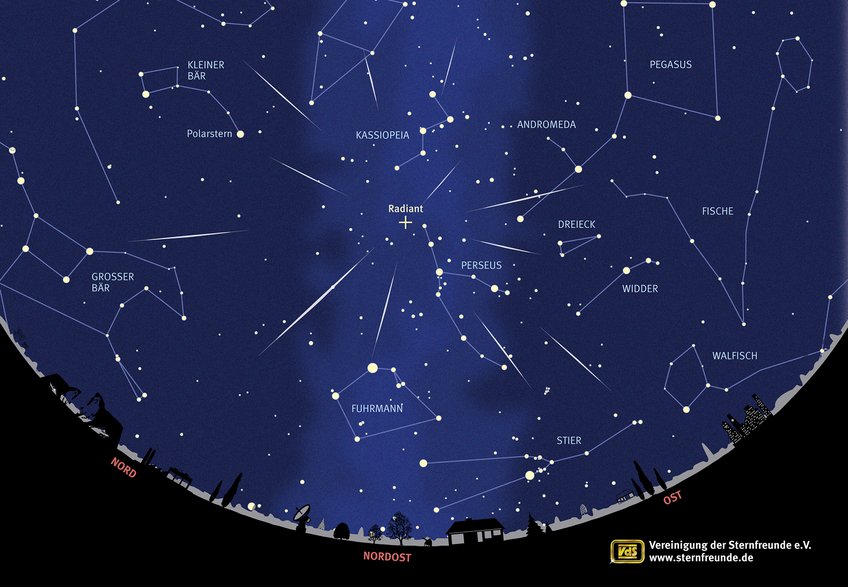Shooting stars in the summer sky: the Perseids are coming
It's time for the Perseids again! The conditions for meteor sightings at the peak of the Perseid meteor shower on 12 August 2021 are good: The waxing crescent Moon sets early and hardly interferes
You can count on it: Every year around 12 August, a particularly large number of shooting stars can be seen in the night sky. During this time, we fly our "spaceship Earth" through a swarm of cosmic dust particles that cause traces of light when they enter Earth's atmosphere. Under optimal conditions, meteors can be seen whizzing across the sky every one to two minutes. This year the conditions are particularly favourable because the Moon sets already in the late evening.
Most shooting stars can be seen after midnight, when the Earth is heading heads-up into the dust. There are two opportunities to do so this year: on the nights of 11 to 12 August and 12 to 13 August 2021. Theoretically, the so-called Perseids will reach their maximum in the late evening of 12 August. Cameras will count up to 100 meteors under very dark skies; a single observer will see about 30 to 50 shooting stars per hour. It is best to look towards the east, where the constellation Perseus rises, after which these shooting stars are named.

The Perseids seem to originate from the constellation Perseus. Every meteor shower has such a "radiant" or point of emergence, because Earth passes through a cloud of comet debris on its orbit around the Sun. In the case of the Perseids, the originating comet has the designation 109P/Swift-Tuttle. This comet was discovered independently by Lewis Swift and Horace Tuttle on 19 July 1862. It takes about 133 years for one orbit around the Sun. In 1992, this comet was observed returning, and its next visibility is not expected until the year 2126.
The constellation of Perseus is a classic autumn and winter constellation. In mid-August, Perseus, and with it the radiant of the Perseids, rises in the evening sky and then climbs higher and higher. Most shooting stars are therefore seen in the late evening and - even better - early morning hours, as our gaze then goes exactly in the direction of the "snow storm" of shooting stars.
As soon as it has become really dark in the evening, the Moon sets in the west this year. Its light will therefore not brighten the sky, so the chances of seeing significantly more shooting stars is better than when the Moon is there. The darker the sky, the more meteors you'll catch. The Perseids are also known for particularly bright shooting stars that can't be missed even in bright city skies.
The occurrence of the Perseids is not limited to the short period of maximum, you can also try your luck on the weekends before and after - preferably comfortably on a garden lounger with a relaxed view upwards. Good luck!
